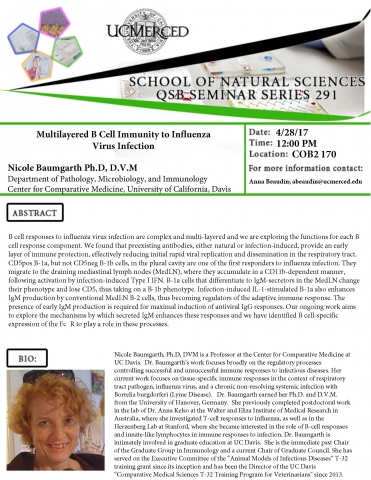Nicole Baumgarth, University of California, Davis
Abstract:
B cell responses to influenza virus infection are complex and multi-layered and we are exploring the functions for each B cell response component. We found that preexisting antibodies, either natural or infection-induced, provide an early layer of immune protection, effectively reducing initial rapid viral replication and dissemination in the respiratory tract. CD5pos B-1a, but not CD5neg B-1b cells, in the plural cavity are one of the first responders to influenza infection. They migrate to the draining mediastinal lymph nodes (MedLN), where they accumulate in a CD11b-dependent manner, following activation by infection-induced Type I IFN. B-1a cells that differentiate to IgM-secretors in the MedLN change their phenotype and lose CD5, thus taking on a B-1b phenotype. Infection-induced IL-1-stimulated B-1a also enhances IgM production by conventional MedLN B-2 cells, thus becoming regulators of the adaptive immune response. The presence of early IgM production is required for maximal induction of antiviral IgG responses. Our ongoing work aims to explore the mechanisms by which secreted IgM enhances these responses and we have identified B cell-specific expression of the FcR to play a role in these processes.




